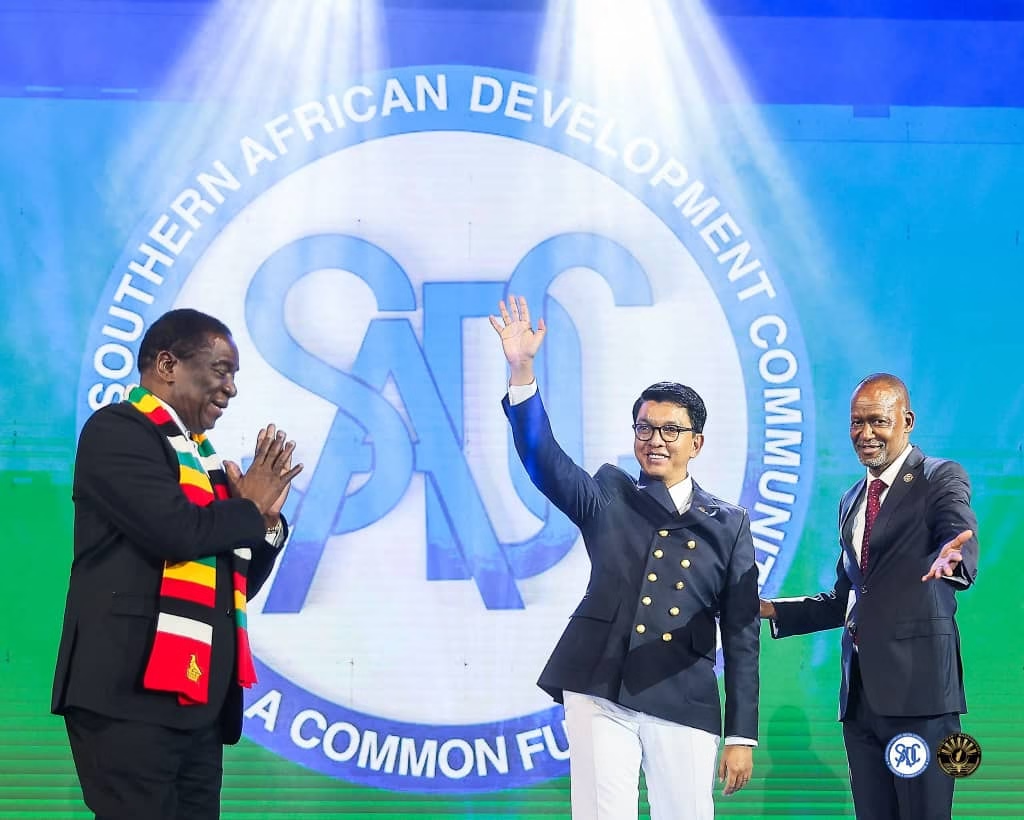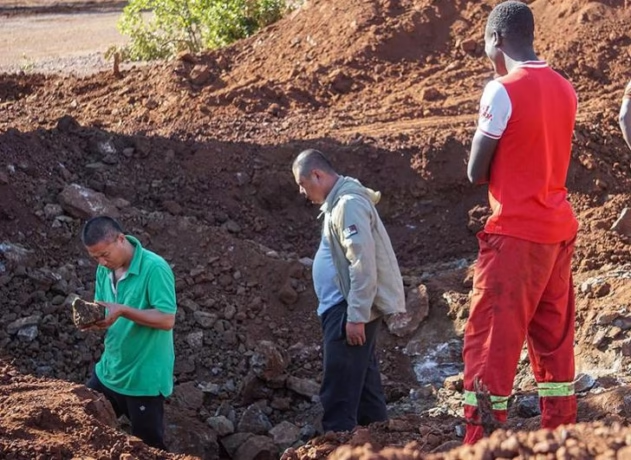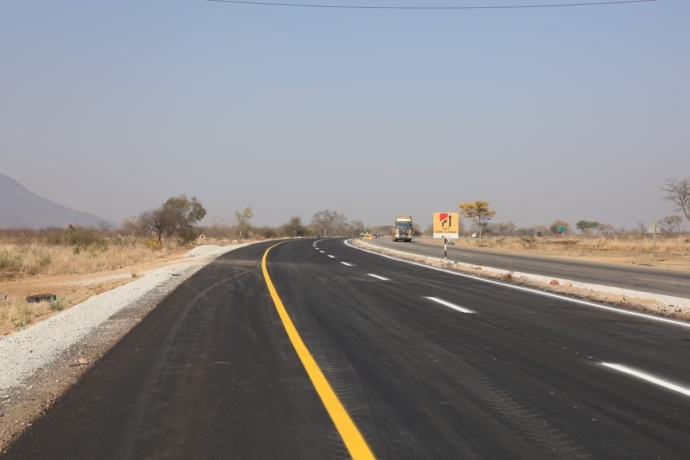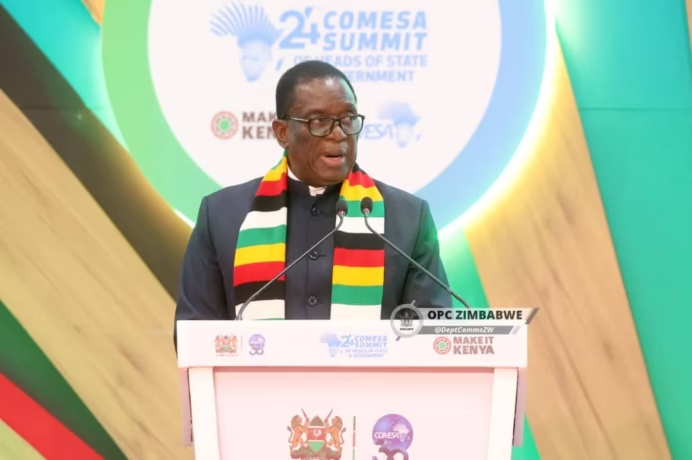
By Aldridge Dzvene
When the former SADC Chairperson, His Excellency President Emmerson Dambudzo Mnangagwa, concluded his tenure as Chairperson of the Southern African Development Community, the region reflected on a period marked by bold decisions, strategic foresight, and a reaffirmation of Africa’s potential to shape its own destiny. His chairmanship was more than a routine regional appointment, it was a transformative period that redefined SADC’s role in security, diplomacy, economic integration, and Africa’s global positioning, while simultaneously elevating Zimbabwe as a leader of influence and vision.
From the very start, the former SADC Chairperson, His Excellency President Mnangagwa, demonstrated that leadership in SADC required a fusion of vision, experience, and courage. Known across the continent as a Pan-Africanist with decades of engagement in regional affairs, he approached the chairmanship not as a ceremonial position but as a platform to assert Southern Africa’s relevance in peace, security, and development. His tenure, now concluded, is widely regarded as one of the most impactful in recent SADC history.
A cornerstone of his leadership was regional peace and security, with the Democratic Republic of Congo emerging as a defining example. When the East African Community’s regional force faced operational challenges and limitations in eastern DRC, the former SADC Chairperson, His Excellency President Mnangagwa, through SADC, coordinated a decisive intervention. Under his stewardship, the bloc deployed troops and diplomatic efforts to stabilize the region, preventing a security vacuum that could have had devastating consequences for the DRC and its neighbors. The collaborative framework he orchestrated with the EAC, culminating in a united peace front, was emblematic of his strategic approach, regional unity, African solutions to African problems, and decisive action to safeguard sovereignty. This initiative reaffirmed SADC’s credibility as a peace guarantor and positioned Southern Africa as a responsible actor capable of influencing global security outcomes.
Beyond security, the former SADC Chairperson, His Excellency President Mnangagwa’s tenure emphasized economic transformation and regional integration. He championed the SADC Industrialization Strategy, advocating for beneficiation of natural resources, regional trade expansion, and harnessing technological innovation as drivers of sustainable growth. His vision recognized that Africa must not remain a mere supplier of raw materials but must process, manufacture, and innovate to compete on a global scale. By promoting industrialization alongside digital transformation, he positioned SADC as a bloc capable of economic resilience, competitiveness, and self-reliance, while simultaneously enhancing Zimbabwe’s image as a hub for visionary leadership in economic and developmental affairs.
In parallel, his leadership tackled climate resilience and food security, two pressing challenges for Southern Africa. The former SADC Chairperson, His Excellency President Mnangagwa, pushed for coordinated regional strategies to mitigate the impacts of droughts, climate shocks, and agricultural vulnerabilities. By framing these issues collectively, he ensured that SADC was not only reactive but proactive in addressing transnational challenges that directly affect millions of people, further solidifying the bloc’s relevance in regional governance.
The former SADC Chairperson, His Excellency President Mnangagwa’s tenure also strengthened SADC’s diplomatic and global standing. He actively engaged with continental and international stakeholders, advocating for equitable trade, defending African sovereignty, and positioning the continent as a credible voice in global affairs. His chairmanship demonstrated that SADC could engage confidently with global powers, influence multilateral decisions, and assert African priorities, all while highlighting Zimbabwe’s capacity to provide leadership at both regional and continental levels.
At the core of the former SADC Chairperson, His Excellency President Mnangagwa’s leadership was a deeply ingrained Pan-African vision, rooted in decades of commitment to the continent’s unity and prosperity. From peacekeeping legacies in the DRC to fostering regional solidarity, he demonstrated that Zimbabwe’s experience and moral authority could be leveraged to benefit the broader continent. He bridged historical experience with contemporary strategy, showing that SADC could combine tradition with innovation to address complex security, economic, and developmental challenges.
Moreover, his chairmanship left a lasting impression on Zimbabwe’s profile. Through proactive diplomacy, economic advocacy, and strategic interventions, the former SADC Chairperson, His Excellency President Mnangagwa, positioned Zimbabwe as a country capable of leading continental initiatives, projecting stability, and contributing meaningfully to Africa’s development narrative. In an era where regional influence is closely tied to proactive leadership, his term underscored Zimbabwe’s enduring relevance and capacity to shape regional policy.
His approach was comprehensive, security, economy, climate resilience, diplomacy, and continental unity were all interconnected strands that he wove together into a coherent vision for Southern Africa. The DRC peace initiative remains the signature achievement of his tenure, but equally significant were his pushes for industrialization, trade facilitation, digital transformation, and climate adaptation. Collectively, these efforts redefined what it meant to lead SADC, not as a ceremonial figurehead, but as a decisive, visionary, and transformative leader.
As SADC transitions to new leadership, the blueprint left by the former SADC Chairperson, His Excellency President Mnangagwa, sets a high standard. His tenure illustrates that with strategic vision, decisive action, and Pan-African commitment, regional bodies can effectively safeguard peace, drive economic growth, and amplify Africa’s voice on the world stage. Zimbabwe, under his guidance, emerged as a model of resilience, vision, and influence, a nation capable of safeguarding both its interests and the broader interests of Southern Africa and the continent.
The former SADC Chairperson, His Excellency President Mnangagwa’s SADC chairmanship is now history, but its impact resonates across borders and sectors. It reminds the world that effective leadership, grounded in vision and courage, can transform a region, elevate a nation, and shape the future of an entire continent.




